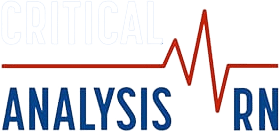Forensic nursing is a field where science and the judicial system meet, with forensic nurses playing a pivotal role in crime scene evidence interpretation, analyzing physical and biological evidence to solve crimes. These medical detectives use their extensive training to turn clues into testimony that can stand up in a court of law.
Understanding the Evidence
The first step in the forensic nurse’s investigative process is understanding the type of evidence available. Physical evidence can include anything from wounds on a body to the smallest fiber found at a crime scene. Biological evidence typically consists of blood, saliva, semen, or other bodily fluids that may contain DNA, which can be crucial in linking a suspect to a crime or identifying a victim.
Assessing Wounds
When assessing wounds, forensic nurses must determine the nature of the injury, such as whether it’s blunt force trauma, a sharp force injury, or a gunshot wound. They take into consideration the size, depth, and location of the wound, which can indicate the type of weapon used and the amount of force applied. They also look for patterns of injury, which can suggest whether the wounds were defensive, indicating a struggle, or if they were inflicted post-mortem.
Collecting Biological Evidence
The collection of biological evidence is a delicate and precise operation. Forensic nurses are trained in proper collection techniques to avoid contamination. They use swabs to collect fluids, preserve samples in appropriate containers, and ensure they are stored under the right conditions to prevent degradation of DNA. They also document everything meticulously, noting the time of collection, the exact location on the body or at the scene, and the condition of the evidence.
Interpreting Lab Results
Once the evidence is collected, it is often sent to a laboratory for analysis. Forensic nurses must be able to interpret the results of these analyses. This could involve understanding DNA profiles, toxicology reports, and blood spatter patterns. They need to be able to explain these results in layman’s terms for the legal team, jury, and others involved in the judicial process.
Utilizing Forensic Photography
Forensic nurses also use photography to document evidence. They are trained in forensic photography techniques to capture images that accurately represent the evidence. These images must be clear, well-lit, and free of any alterations to be admissible in court.
Analyzing Evidence in Context
Forensic nurses do not analyze evidence in isolation; they must consider the context of the crime scene and the victim’s story. They use their clinical knowledge to piece together what happened, asking questions such as: Does the evidence align with the victim’s account? Are there inconsistencies in the story suggested by the evidence? They must remain objective, letting the evidence speak for itself without bias.
Linking Evidence to Suspects
One of the most critical aspects of a forensic nurse’s job is to help link evidence to suspects. This might involve comparing DNA from the crime scene with suspect samples or analyzing injuries on a victim for DNA or other trace evidence that could lead to the perpetrator.
The Significance of Trace Evidence
Forensic nurses understand the importance of trace evidence—tiny fibers, hairs, or particles that may be transferred between people, objects, and locations. These minuscule pieces of evidence can place a suspect at a crime scene or connect a victim to a suspect’s environment.
Testifying in Court
The final step in the forensic nurse’s role in evidence interpretation is often testifying in court. They must be able to clearly and confidently present their findings, explain how evidence was collected and analyzed, and withstand cross-examination by defense attorneys.
Conclusion Forensic nurses serve as the translators of medical and scientific evidence into the language of the law. Their ability to decipher clues and interpret evidence is critical to building a case and achieving justice. By combining their medical expertise with forensic science, these nurses provide invaluable insights that can solve crimes and bring closure to victims and their families. Their work is meticulous, methodical, and, above all, fundamental to upholding the legal process.
